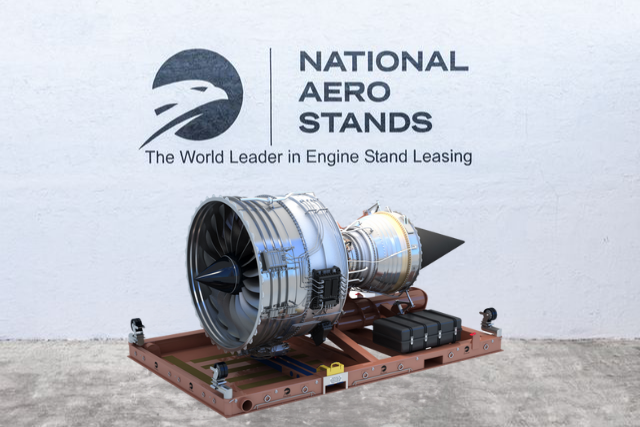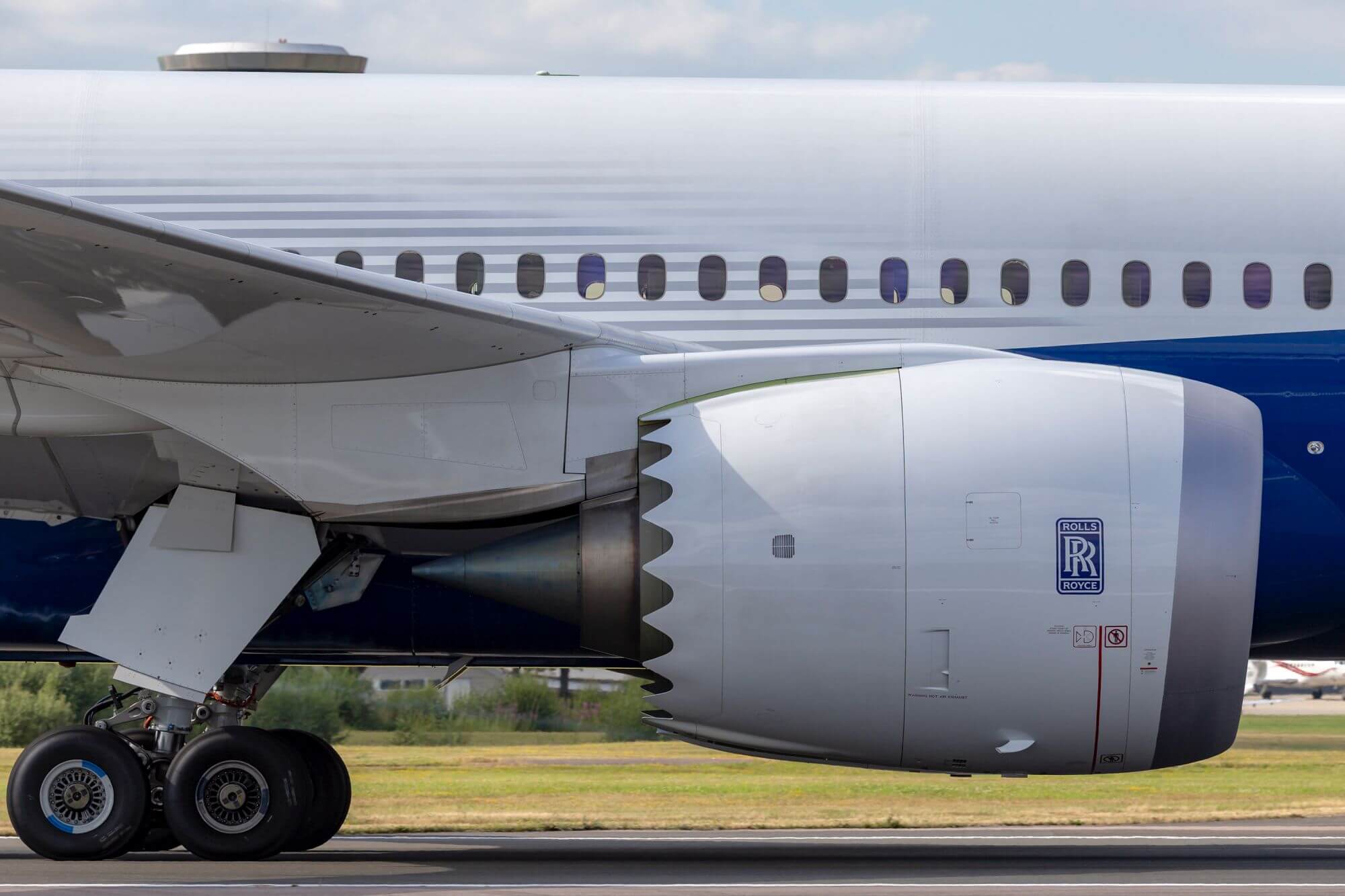The Rolls-Royce Trent 1000 represents a groundbreaking achievement in aviation engineering, revolutionizing how we power modern aircraft. Let’s explore this remarkable engine’s capabilities, innovations, and impact on commercial aviation.
Overview of the Trent 1000 Engine
The Rolls-Royce Trent 1000 is a state-of-the-art high bypass turbofan engine specifically designed for the Boeing 787 Dreamliner. Its distinctive three-shaft architecture sets it apart from conventional designs, featuring three independent, coaxial shafts that work in perfect harmony.
- Fan diameter: 2.85 m (9 ft 4 in), driven by Low Pressure (LP) shaft with six axial turbines
- Intermediate Pressure (IP) spool: eight axial compressors with single turbine stage
- High Pressure (HP) Compressor: six stages with counter-rotating single turbine stage
History and Development of the Trent 1000
Development began in the early 2000s, aimed at creating a more efficient and powerful engine for next-generation wide-body aircraft. The engine’s evolution reached a significant milestone with the introduction of the Trent 1000 TEN (Thrust, Efficiency, and New Technology) variant in December 2016, which exceeded performance expectations during testing.

Discover the reliable Trent 1000 by National Aero Stands, designed for secure transportation and storage of engines.
Key Specifications of the Trent 1000
| Specification | Details |
|---|---|
| Engine Type | Three-shaft high bypass ratio turbofan |
| Length | 4.738 m (186.5 in) |
| Fan Diameter | 285 cm (112 in) |
| Dry Weight Range | 5,936 – 6,120 kg (13,087 – 13,492 lb) |
| Maximum Thrust Range | 265.3 kN – 360.4 kN |
Performance of the Trent 1000 Engine
The engine’s sophisticated three-shaft design enables optimal power distribution and efficiency. Its advanced combustion system, featuring a single annular combustor with 18 fuel spray nozzles, ensures precise fuel management and optimal performance across all flight phases.
Fuel Efficiency and Power Output
The high bypass ratio design significantly improves fuel efficiency while reducing noise levels. The improved High Pressure Turbine Blade (HPTB) design has doubled the Take-Off Weight capability, enhancing the engine’s power-to-weight ratio for increased payload capacity and range.
Reliability and Maintenance
- Modular design allowing quick access for inspections and repairs
- Advanced health monitoring systems for predictive maintenance
- Comprehensive support network ensuring consistent performance
- Top-class reliability indicators across all operational parameters
- Streamlined maintenance procedures reducing operational costs
Features of the Trent 1000 Engine
The engine’s impressive dimensions and sophisticated design contribute to its exceptional performance. With a length of 4.738 m and a massive 2.85 m fan diameter, the Trent 1000 achieves remarkable efficiency while maintaining an optimal power-to-weight ratio, making it a cornerstone of modern commercial aviation.

Advanced Technology and Design
The Trent 1000’s sophisticated compressor system showcases its advanced technological prowess through a three-tier configuration:
- Single-stage low-pressure (LP) fan for initial air compression
- Eight-stage intermediate-pressure (IP) compressor for enhanced flow management
- Six-stage high-pressure (HP) compressor with counter-rotating design for maximized efficiency
The engine’s innovative combustion system features a single annular combustor equipped with 18 fuel spray nozzles, managed by an advanced Electronic Engine Control (EEC). This sophisticated setup ensures:
- Optimal fuel burn efficiency
- Maximized power output
- Minimized emissions
- Precise performance control across all flight conditions
Environmental Impact and Sustainability
| Environmental Feature | Benefit |
|---|---|
| High bypass ratio configuration | Enhanced fuel efficiency and reduced noise levels |
| Advanced combustion system | Lower CO2 emissions per passenger mile |
| 18-nozzle spray system | More complete and efficient fuel burn |
The engine’s environmentally-conscious design makes it an ideal choice for airlines prioritizing sustainability and compliance with strict airport noise regulations. Its forward-thinking features align perfectly with the aviation industry’s push toward greener operations and reduced environmental impact.
Innovations in the Trent 1000 Engine
The Trent 1000 TEN (Thrust, Efficiency, and New Technology) variant, introduced in December 2016, marks a significant milestone in aerospace engineering. This cutting-edge version, successfully tested on the Boeing 787 Dreamliner, exceeded pre-test predictions and established new industry benchmarks for power, efficiency, and reliability.

Discover the reliable Trent 1000 by National Aero Stands, designed for secure transportation and storage of engines.
Cutting-edge Engineering Solutions
The engine’s three-shaft architecture represents a masterpiece of engineering innovation, featuring coaxial shafts that optimize power distribution across various flight conditions. This sophisticated design works in harmony with the advanced compressor system to maximize air compression and flow efficiency.
The integration of the single annular combustor with 18 spray nozzles, coupled with the Electronic Engine Control (EEC) system, delivers precise performance management while maintaining environmental sustainability.
Future Developments and Upgrades
Rolls-Royce’s commitment to innovation continues with the development of an improved High Pressure Turbine Blade (HPTB) design. This advancement promises to more than double the Take-Off Weight capability of Trent 1000-powered aircraft, significantly enhancing their operational flexibility.
These ongoing enhancements, particularly beneficial for the Boeing 787 Dreamliner fleet, focus on improving engine durability and reliability. By addressing previous concerns and enhancing overall performance, Rolls-Royce ensures the Trent 1000 remains at the forefront of next-generation aircraft propulsion technology.

